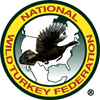|
Restorations
Efforts for the Wild Turkey
In the early 1900s, only around 30,000
turkeys remained. But around 1920, things began to
change for the better. Millions of acres cleared by
pioneers began to regenerate into woodlands. Also,
some farsighted leaders began enacting more and more
conservation laws. In 1937 the Roosevelt Administration
passed the Federal Aid in Wildlife Restoration Act
(Pittman-Robertson Act) which placed an excise tax
on firearms, ammunition and other hunting equipment.
The billions of dollars raised by this tax have been
used in part to rebuild the wild turkey population.
Early restoration techniques many
state agencies believed to be promising, did not work,
such as: artificial propagation of game-farm or pen-raised
turkeys. Pen-raised turkeys were not properly imprinted
on (recognition and attachment) wild hens and did
not have the experience and survival skills necessary
to live and reproduce in the wild. Released pen-raised
birds spread disease to the true wild flocks. Stocking
of pen-raised turkeys only served to feed predators
and hinder population expansion. Pennsylvania stopped
trying to stock pen-raised turkeys in 1981.
As trapping techniques advanced, turkey
numbers began to incline. The development of a rapidly
propelled cannon net, originally designed for capturing
waterfowl, was a major factor in relocating large
numbers of wild turkeys for restoration. Thousands
of wild turkeys were captured or moved with this technique
or variations of it; in addition, drop nets and immobilizing
drugs were used.
 During
the last 60 years, state and federal wildlife agencies,
which are funded largely by hunters' dollars, have
spent millions on habitat-improvement and turkey trap-and-transplant
projects. By 1959 the total turkey population approached
one-half million. In 1973, the National Wild Turkey
Federation (NWTF), a nonprofit conservation and educational
organization, was founded to conserve the wild turkeys
and to regulate people's hunting habits. Since its
inception NWTF has contributed more than $82 million
on restoring the turkey throughout its original range,
and also introducing it into may other regions. In
1994, almost all of the forested eastern United States
and much of the forested West had been restocked,
with an estimated total turkey population approaching
4 million. Today, some 5.0 million big birds roam
49 states (all except Alaska). During
the last 60 years, state and federal wildlife agencies,
which are funded largely by hunters' dollars, have
spent millions on habitat-improvement and turkey trap-and-transplant
projects. By 1959 the total turkey population approached
one-half million. In 1973, the National Wild Turkey
Federation (NWTF), a nonprofit conservation and educational
organization, was founded to conserve the wild turkeys
and to regulate people's hunting habits. Since its
inception NWTF has contributed more than $82 million
on restoring the turkey throughout its original range,
and also introducing it into may other regions. In
1994, almost all of the forested eastern United States
and much of the forested West had been restocked,
with an estimated total turkey population approaching
4 million. Today, some 5.0 million big birds roam
49 states (all except Alaska).
Even though loss of habitat and other
environmental factors remain causes for concern, wild
turkey populations should stay healthy and growing.
Unregulated hunting and habitat
loss almost drove the wild turkey to extinction but
the Pittman-Robertson Act, state wildlife resource
agency turkey restoration programs, the National Wild
Turkey Federation's Target 2000 program, and excellent
hunting policies by the states have helped to secure
the wild turkey's future.
|

